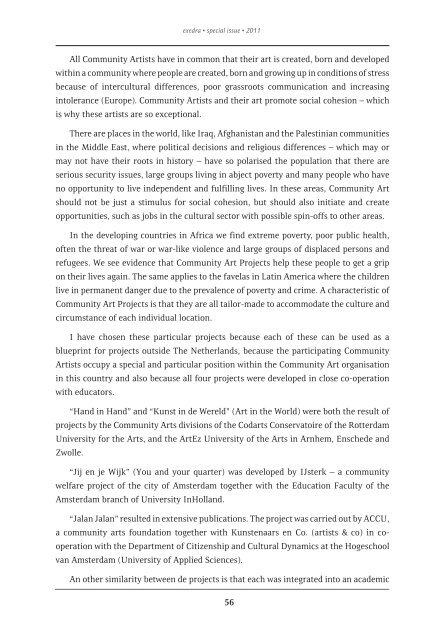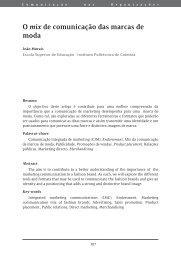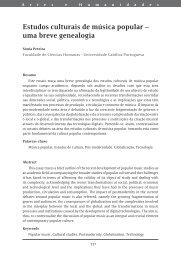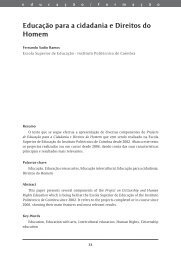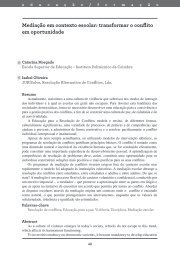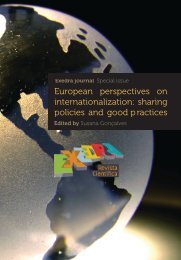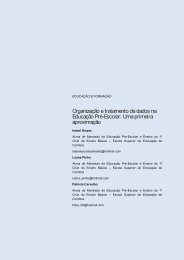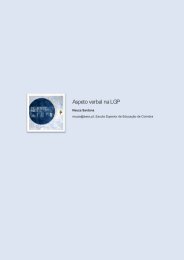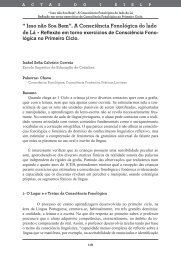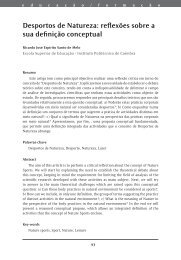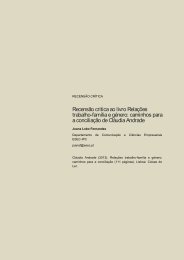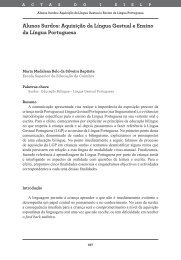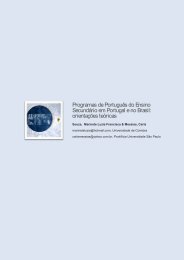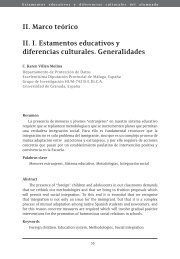The role of community art projects within and without the ... - Exedra
The role of community art projects within and without the ... - Exedra
The role of community art projects within and without the ... - Exedra
- No tags were found...
Create successful ePaper yourself
Turn your PDF publications into a flip-book with our unique Google optimized e-Paper software.
exedra • special issue • 2011All Community Artists have in common that <strong>the</strong>ir <strong>art</strong> is created, born <strong>and</strong> developed<strong>within</strong> a <strong>community</strong> where people are created, born <strong>and</strong> growing up in conditions <strong>of</strong> stressbecause <strong>of</strong> intercultural differences, poor grassroots communication <strong>and</strong> increasingintolerance (Europe). Community Artists <strong>and</strong> <strong>the</strong>ir <strong>art</strong> promote social cohesion – whichis why <strong>the</strong>se <strong>art</strong>ists are so exceptional.<strong>The</strong>re are places in <strong>the</strong> world, like Iraq, Afghanistan <strong>and</strong> <strong>the</strong> Palestinian communitiesin <strong>the</strong> Middle East, where political decisions <strong>and</strong> religious differences – which may ormay not have <strong>the</strong>ir roots in history – have so polarised <strong>the</strong> population that <strong>the</strong>re areserious security issues, large groups living in abject poverty <strong>and</strong> many people who haveno opportunity to live independent <strong>and</strong> fulfilling lives. In <strong>the</strong>se areas, Community Artshould not be just a stimulus for social cohesion, but should also initiate <strong>and</strong> createopportunities, such as jobs in <strong>the</strong> cultural sector with possible spin-<strong>of</strong>fs to o<strong>the</strong>r areas.In <strong>the</strong> developing countries in Africa we find extreme poverty, poor public health,<strong>of</strong>ten <strong>the</strong> threat <strong>of</strong> war or war-like violence <strong>and</strong> large groups <strong>of</strong> displaced persons <strong>and</strong>refugees. We see evidence that Community Art Projects help <strong>the</strong>se people to get a gripon <strong>the</strong>ir lives again. <strong>The</strong> same applies to <strong>the</strong> favelas in Latin America where <strong>the</strong> childrenlive in permanent danger due to <strong>the</strong> prevalence <strong>of</strong> poverty <strong>and</strong> crime. A characteristic <strong>of</strong>Community Art Projects is that <strong>the</strong>y are all tailor-made to accommodate <strong>the</strong> culture <strong>and</strong>circumstance <strong>of</strong> each individual location.I have chosen <strong>the</strong>se p<strong>art</strong>icular <strong>projects</strong> because each <strong>of</strong> <strong>the</strong>se can be used as ablueprint for <strong>projects</strong> outside <strong>The</strong> Ne<strong>the</strong>rl<strong>and</strong>s, because <strong>the</strong> p<strong>art</strong>icipating CommunityArtists occupy a special <strong>and</strong> p<strong>art</strong>icular position <strong>within</strong> <strong>the</strong> Community Art organisationin this country <strong>and</strong> also because all four <strong>projects</strong> were developed in close co-operationwith educators.“H<strong>and</strong> in H<strong>and</strong>” <strong>and</strong> “Kunst in de Wereld” (Art in <strong>the</strong> World) were both <strong>the</strong> result <strong>of</strong><strong>projects</strong> by <strong>the</strong> Community Arts divisions <strong>of</strong> <strong>the</strong> Cod<strong>art</strong>s Conservatoire <strong>of</strong> <strong>the</strong> RotterdamUniversity for <strong>the</strong> Arts, <strong>and</strong> <strong>the</strong> ArtEz University <strong>of</strong> <strong>the</strong> Arts in Arnhem, Enschede <strong>and</strong>Zwolle.“Jij en je Wijk” (You <strong>and</strong> your qu<strong>art</strong>er) was developed by IJsterk – a <strong>community</strong>welfare project <strong>of</strong> <strong>the</strong> city <strong>of</strong> Amsterdam toge<strong>the</strong>r with <strong>the</strong> Education Faculty <strong>of</strong> <strong>the</strong>Amsterdam branch <strong>of</strong> University InHoll<strong>and</strong>.“Jalan Jalan” resulted in extensive publications. <strong>The</strong> project was carried out by ACCU,a <strong>community</strong> <strong>art</strong>s foundation toge<strong>the</strong>r with Kunstenaars en Co. (<strong>art</strong>ists & co) in cooperationwith <strong>the</strong> Dep<strong>art</strong>ment <strong>of</strong> Citizenship <strong>and</strong> Cultural Dynamics at <strong>the</strong> Hogeschoolvan Amsterdam (University <strong>of</strong> Applied Sciences).An o<strong>the</strong>r similarity between de <strong>projects</strong> is that each was integrated into an academic56


